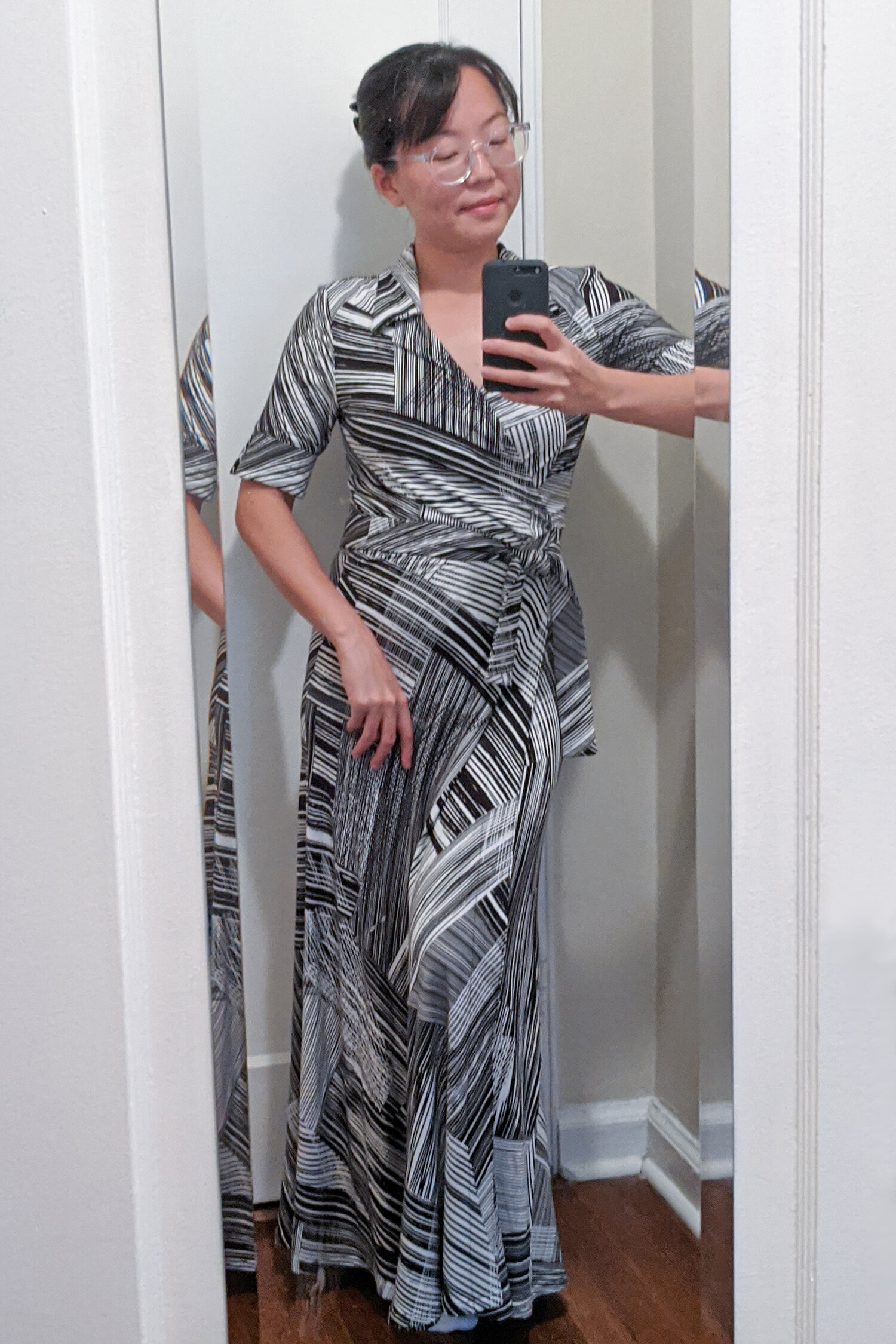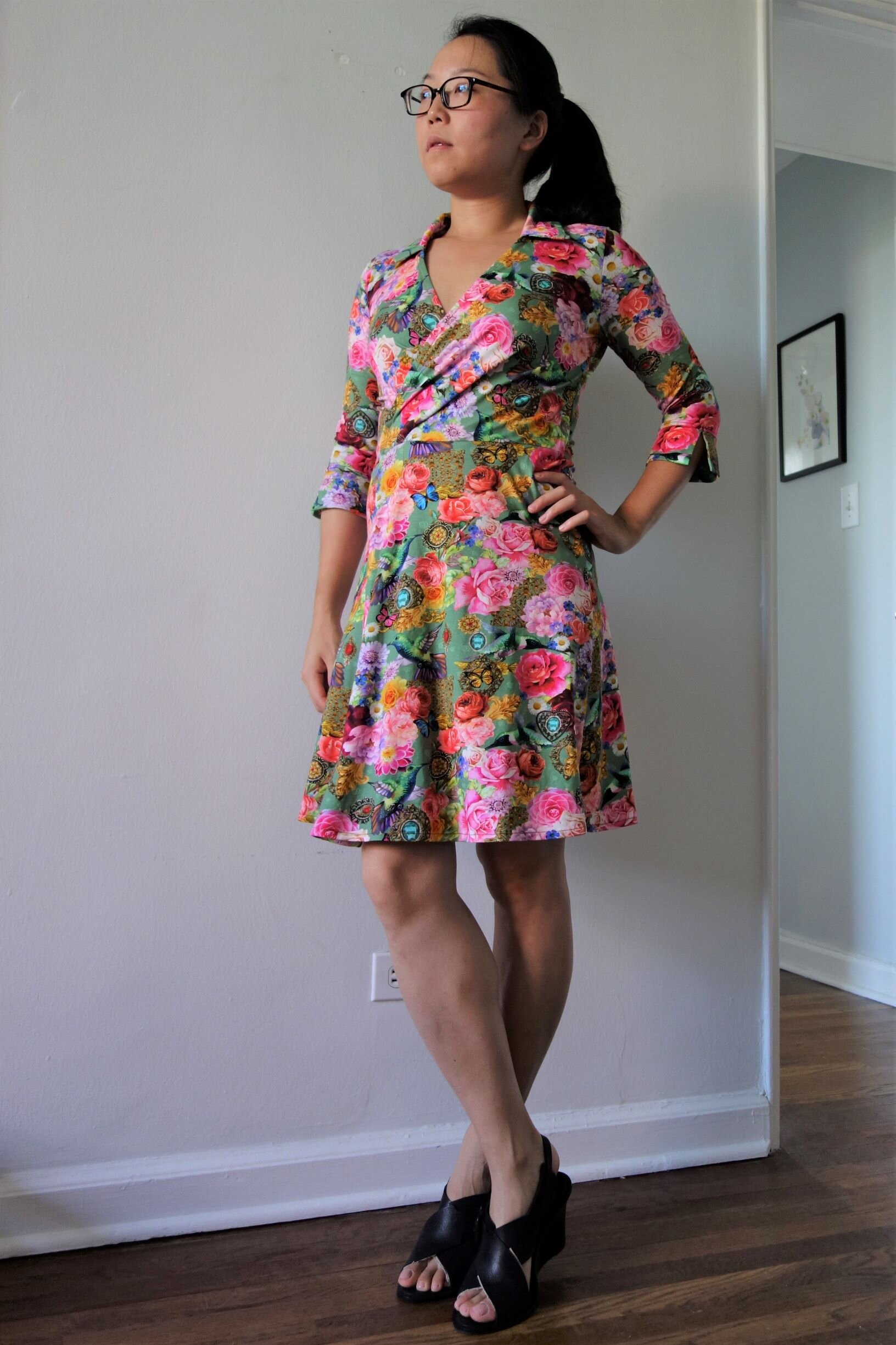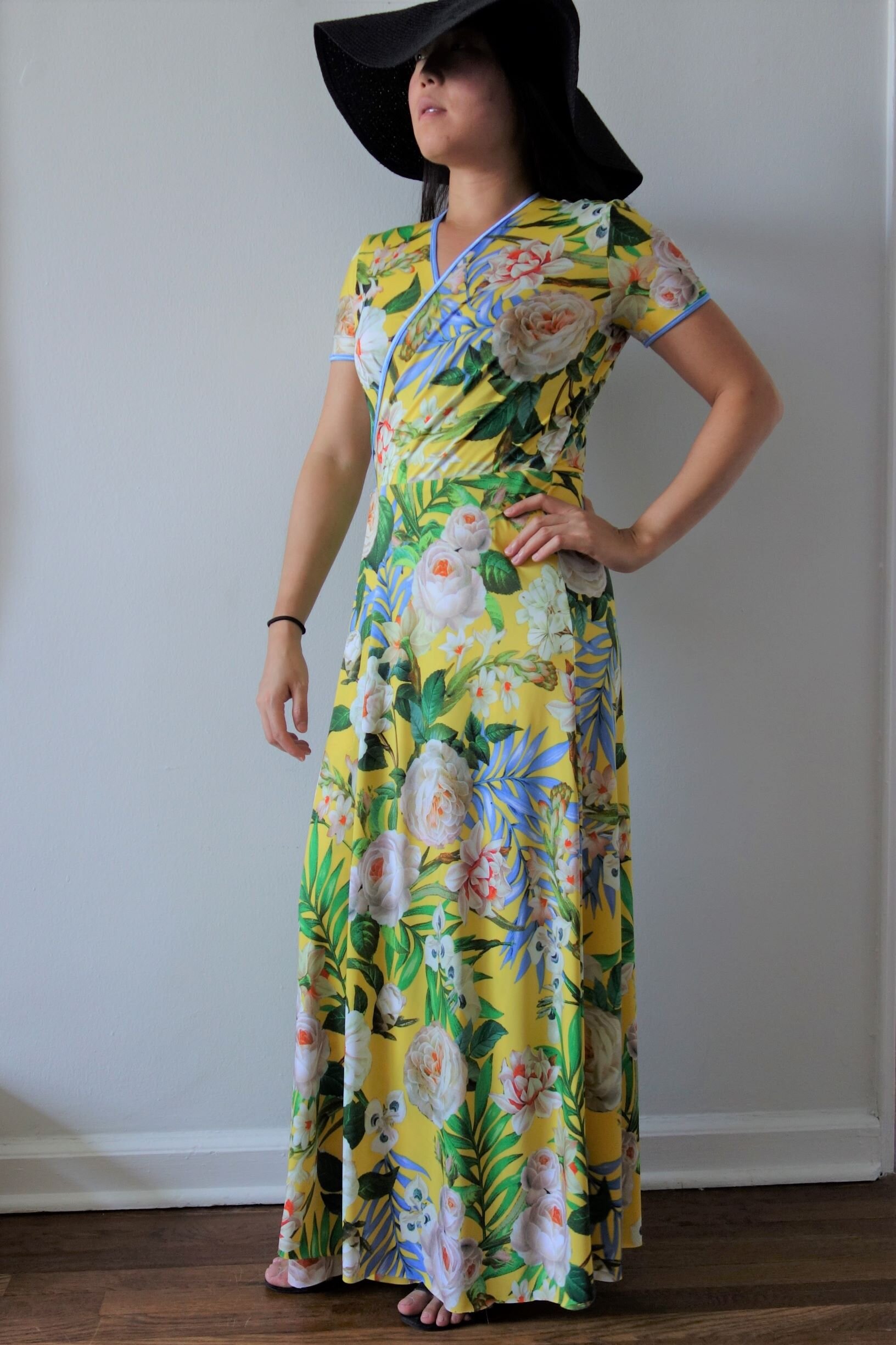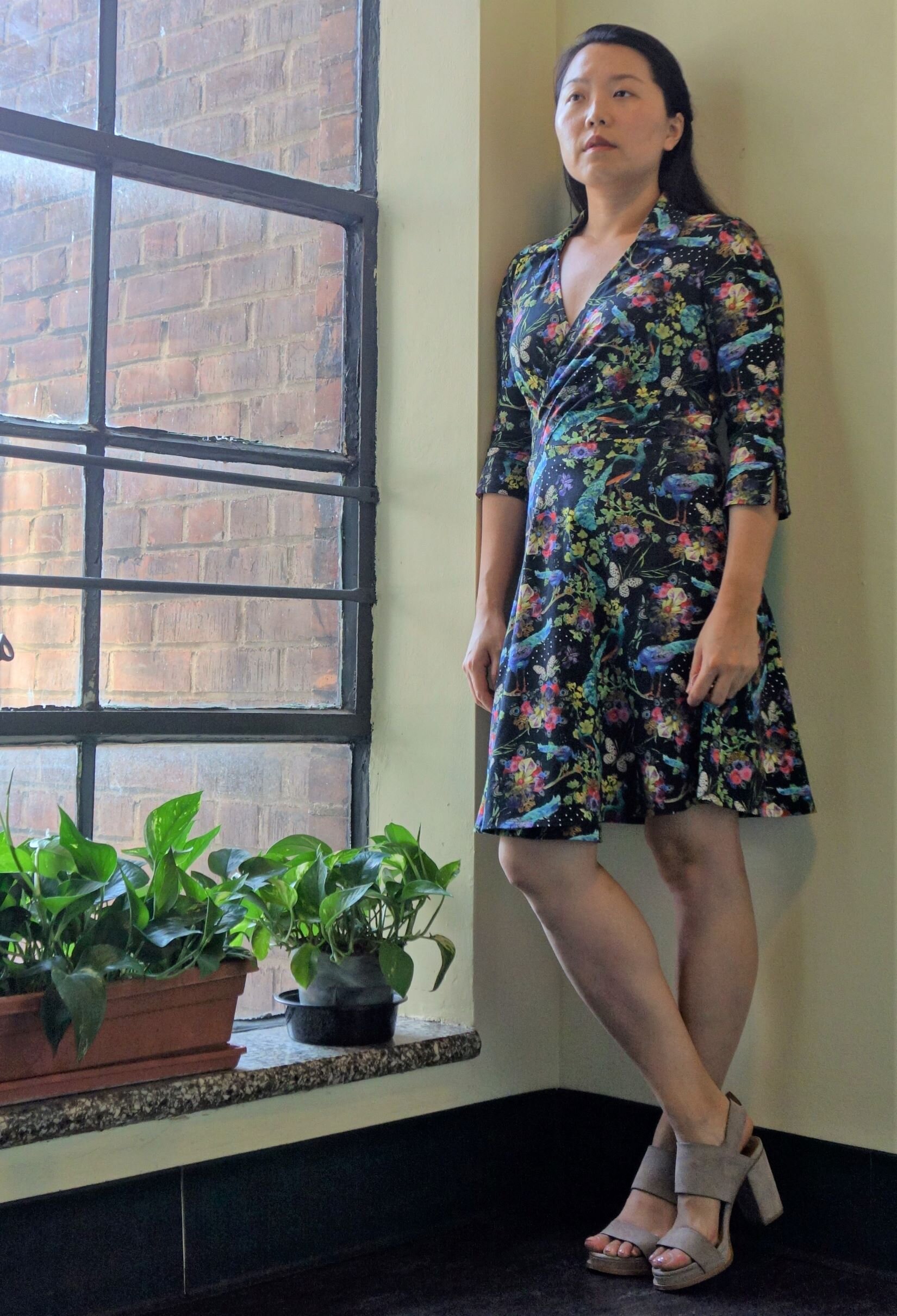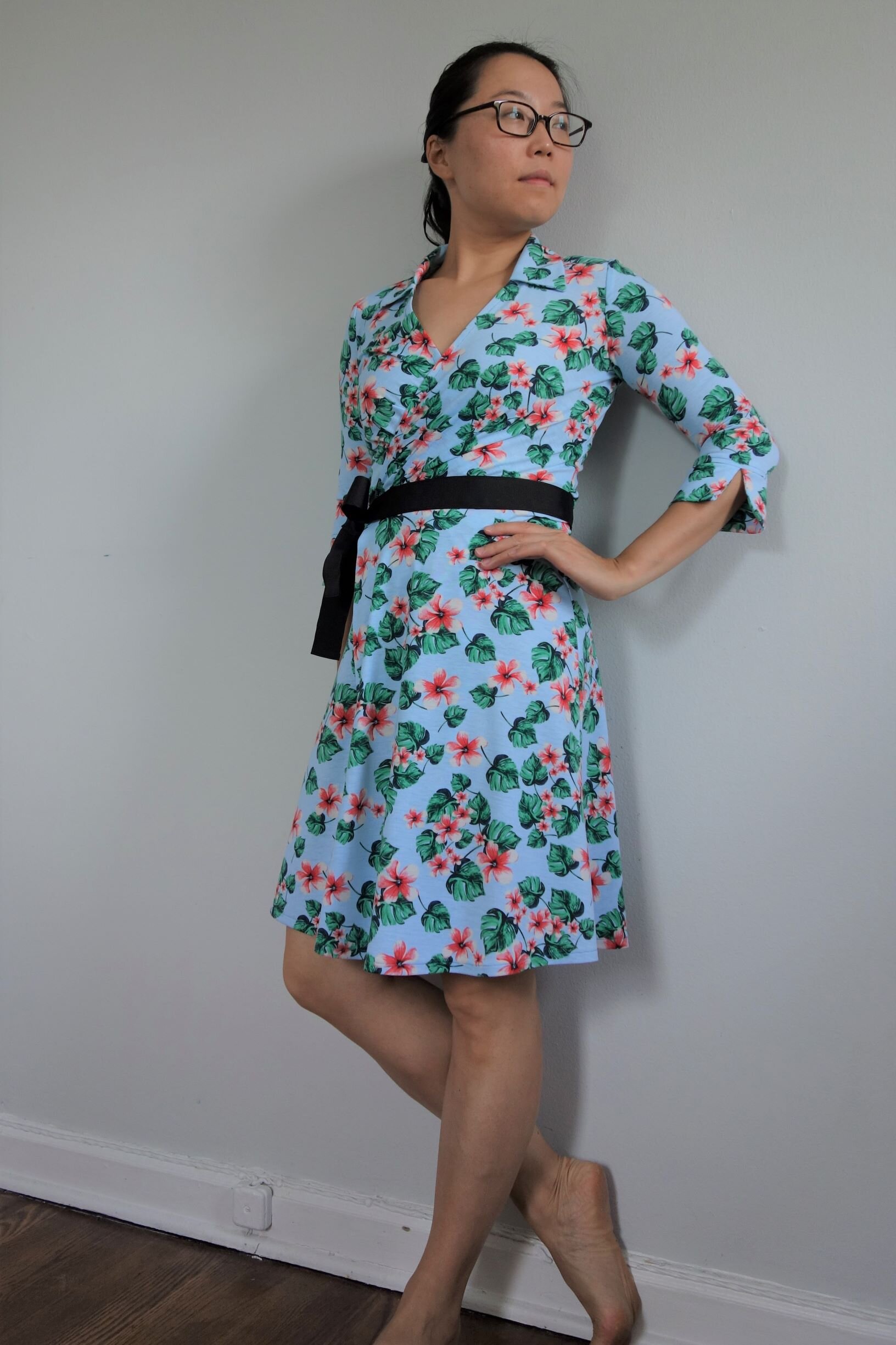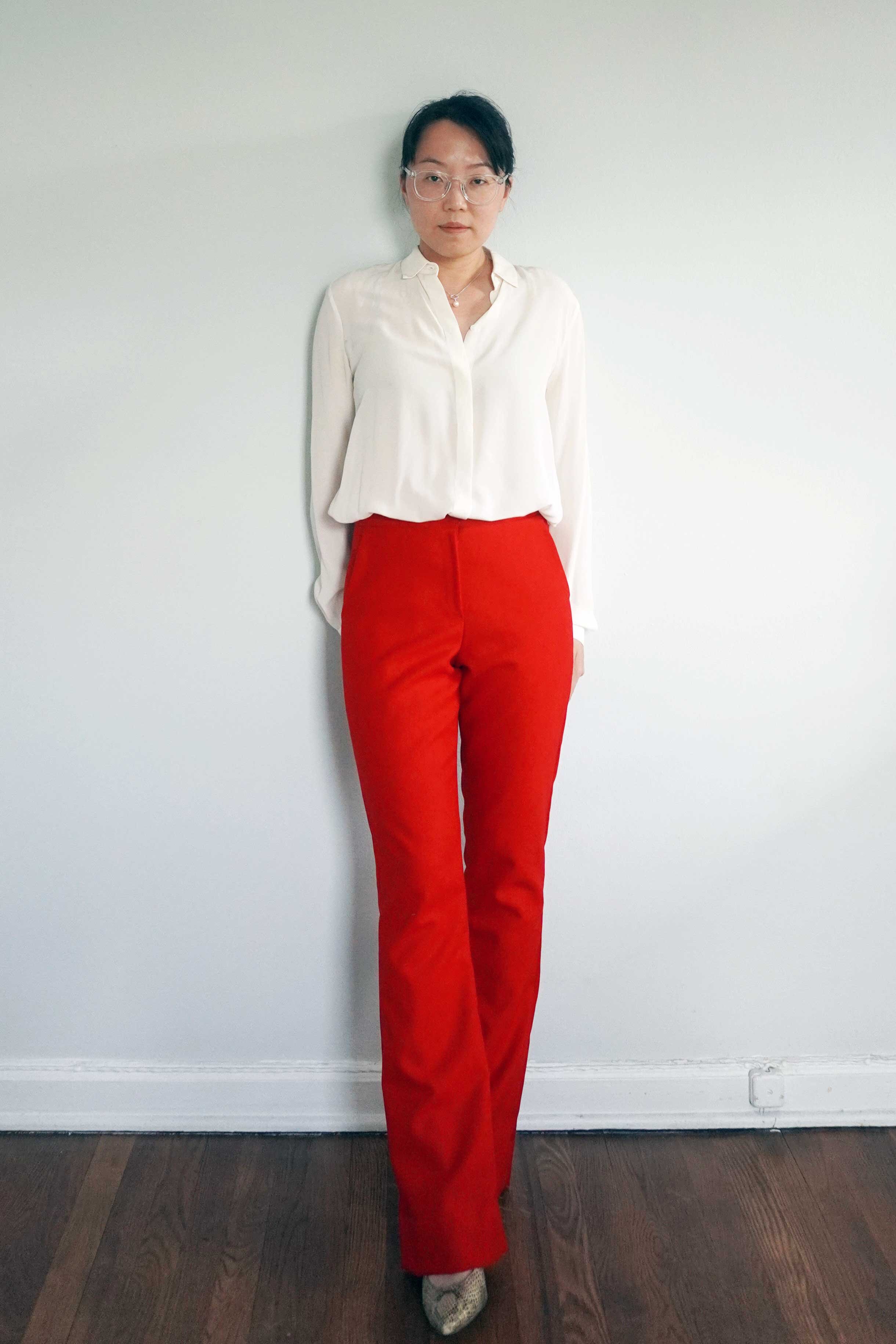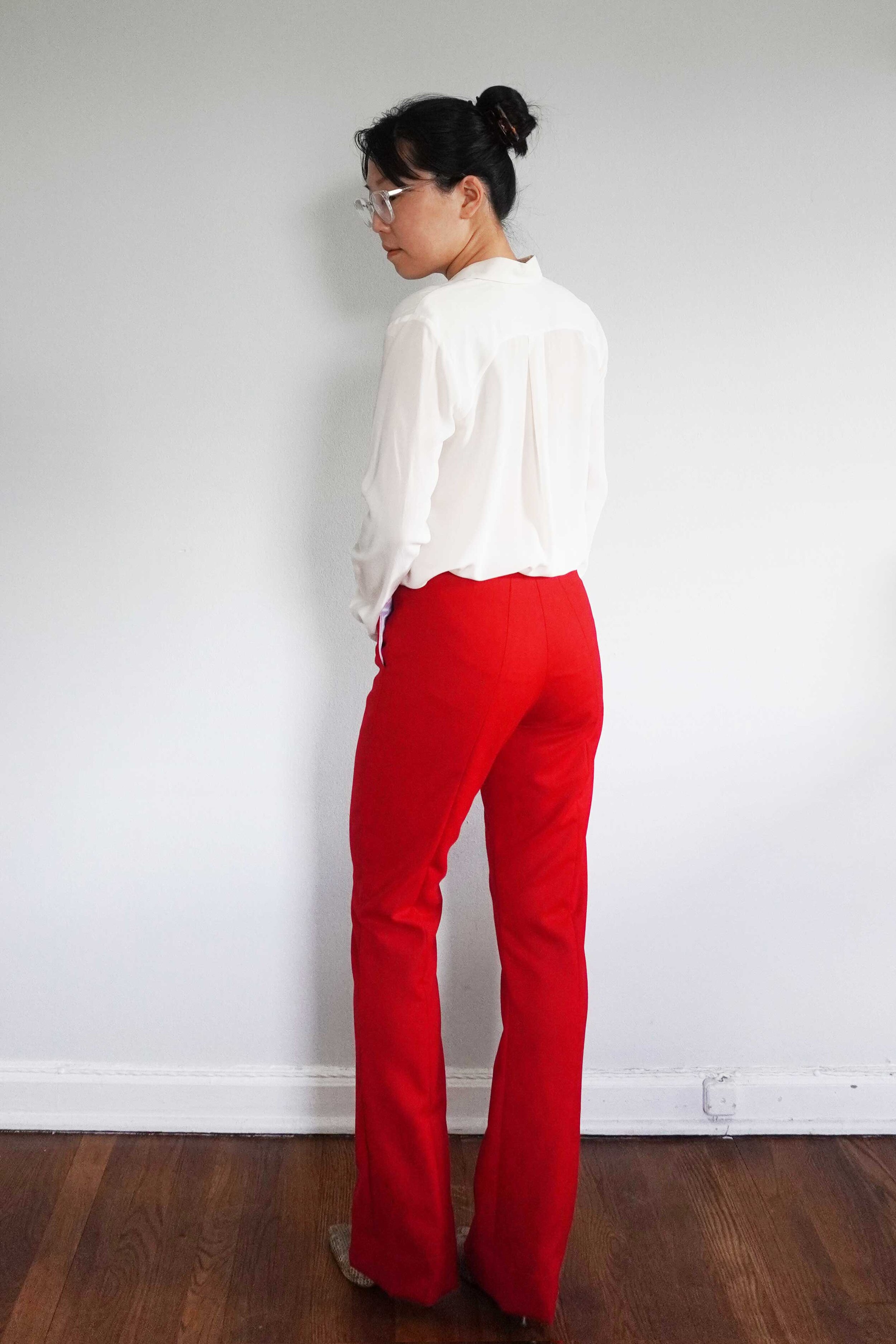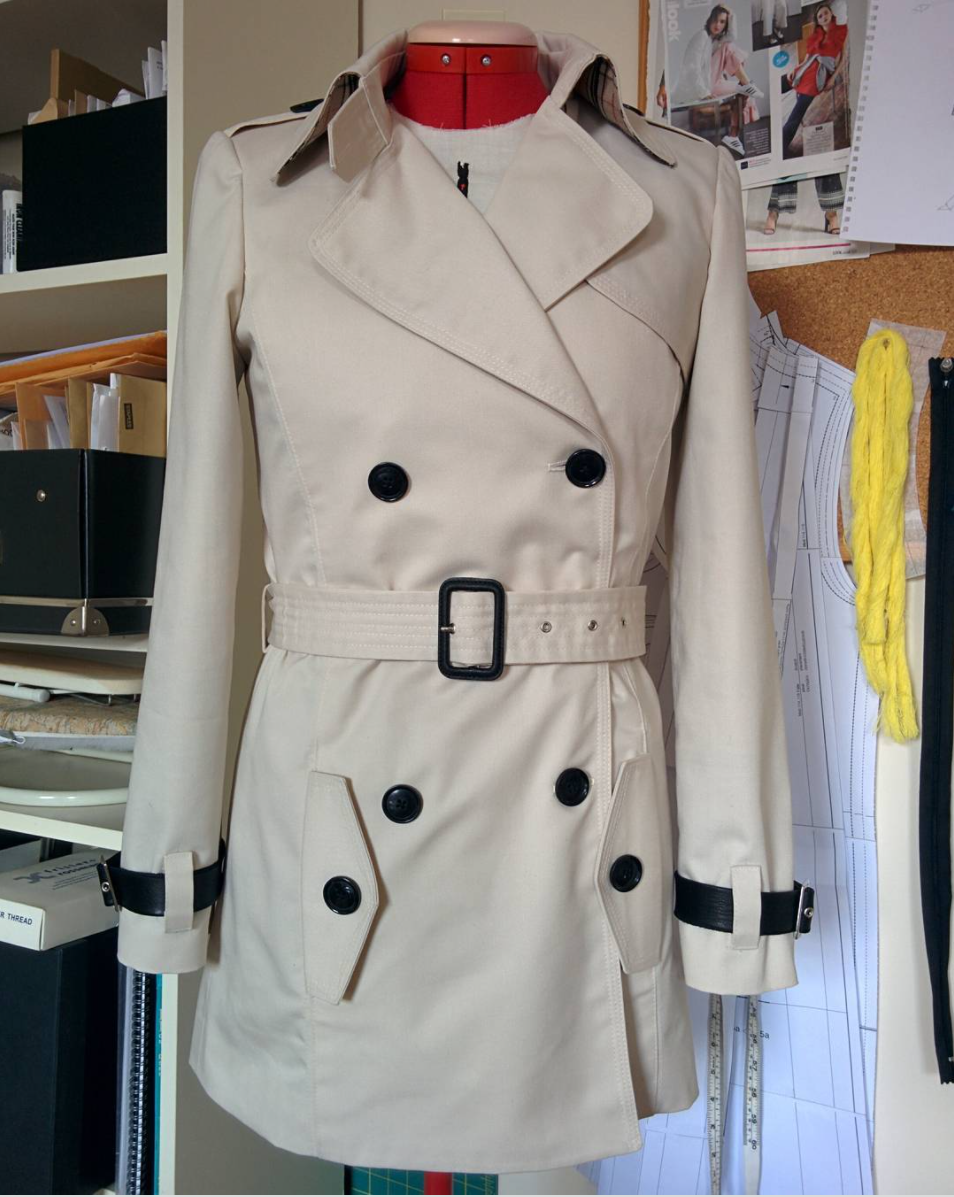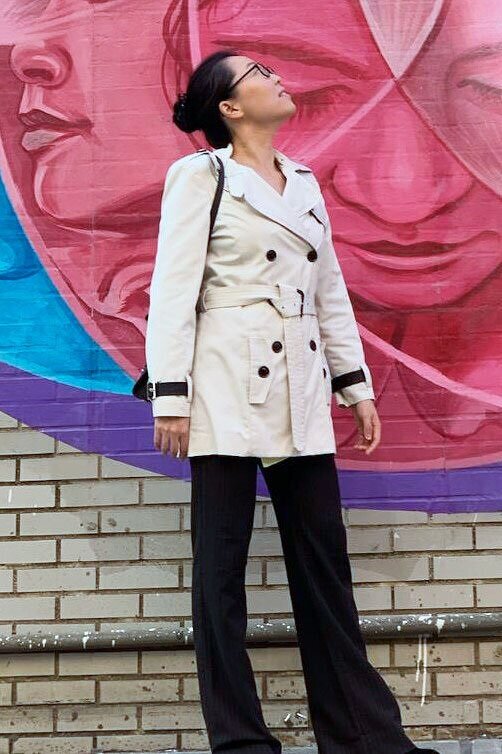Disclosure: This post may contain affiliate links and I may earn a small commission when you click on the links at no additional cost to you. I only recommend products I would use myself and all opinions expressed here are my own.
Year after year, style mavens everywhere proclaim that there are some “classic” pieces that everyone should have in their wardrobe: a basic white tee, tailored pants, trench coat, etc. These pieces will never go out of style so it is worth investing the time and energy into sewing up your own version that is perfectly fitted to your body and tastes. Below is my list of the nine best sewing patterns for classic wardrobe pieces: Grainline Studio Hemlock tee, Colette Sorbetto tank top, McCall’s 6436 button-down shirt, Vogue 8379 wrap dress, Vogue 7975 Chanel-style cardigan jacket, Vogue 9032 tailored pants, Vogue 1324 pencil skirt, Simplicity 1421 classic blazer, and McCall’s 5525 trench coat.
Two quick notes before we get started:
I know that some of these patterns are out of print, but many of the best sewing patterns are. It’s worth doing some Google searching or looking on Etsy to see if you can find the patterns if they are no longer available on the pattern company’s website.
While this list contains my own personal recommendations, every single one of these patterns has been used to great success by other sewing bloggers, whether or not I have noted it in my descriptions below. So while I can’t guarantee that these sewing patterns will work for you, rest assured that they have worked for many other sewists in the past.
With that out of the way, here’s the list:
1. Basic tee: Grainline Studio Hemlock Tee
Now I’ll be honest, I don’t sew t-shirts because I prefer to spend my time sewing more complicated pieces, but if you have a hankering to sew your own t-shirts, look no further than Grainline Studio’s Hemlock Tee. This free sewing pattern for a knit t-shirt features a boxy silhouette, dropped shoulders, and round neckline. You can choose the length of the t-shirt (cropped, medium and tunic-length) and length of the sleeves (short, three-quarter and long sleeve).
The t-shirt looks good made up in drapey knits or stable knits, but you will get a very different look depending on which fabric you use. (Watch this video to see Jen from Grainline Studio compare the different looks.) I personally like the fairly thin, slightly distressed, ‘rocker’ style of t-shirt, and for that kind of look, I would recommend making your t-shirt out of a light- to medium-weight slub cotton jersey fabric. The great thing is there are tons of pics of Hemlock Tees made up by other sewing bloggers (check them out here), so you can look at their versions and get a sense of the type of look you like and the fabric you need to achieve that look.
2. Silk tank top: Colette Sorbetto
No working woman’s wardrobe would be complete without a silk tank top (or shell) to be worn underneath suit jackets. The Sorbetto top from Colette Patterns is a great free sewing pattern that features a box pleat in the front and comes in medium or tunic-length versions.
I would make this up in a silk crepe for a great office-ready top. Yes I know—silk is expensive and must be dry-cleaned, but I have found that the man-made substitutes I have tried (e.g., polyester crepe) just do not feel nice against my skin, so I never end up wearing the finished garment. In my humble opinion, if you’re going to take the time to sew up your own wardrobe, splurge and buy some nicer fabric to work with.
3. Button-down shirt: McCall’s 6436
There is nothing better than a classic button-down shirt—it’s so flattering to the body if cut right, and it’s so versatile that it can be styled up or down. My favorite classic button-down shirt pattern is McCall’s 6436, a pattern for a loose-fitting shirt with cuffed sleeves and different cup sizes (A through DDD). The different cup size options make it easy to sew a shirt that actually fits, and the pattern features some extra details (like the shoulder epaulettes and chest pockets) that really add the finishing touch to the shirt. (The sleeve even has a tab on the inside that you can use to keep the sleeve rolled up.)
This pattern would look good made up in drapey or stable fabrics. If made up in a drapey silk crepe or charmeuse fabric, this pattern would yield a shirt that looks similar to the trendy Equipment silk blouses that were everywhere a few years ago. Alternatively, you could make a classic, crisp shirt if you used a classic cotton shirting fabric. For example, I used this pattern to make the top of a utility jumpsuit a few years back, and I cut the shirt out of an army green cotton shirting fabric. The look is slightly different but still very flattering, in my opinion.
4. Wrap dress: Vogue 8379
What could be better than the classic Diane von Furstenberg wrap dress? It’s a comfortable garment that flatters all body types, and it can be made up in an endless variety of solid or printed fabrics. My go-to wrap dress pattern is Vogue 8379, which mimics the DvF wrap dress almost exactly. It has the collar and cuffs that I think makes the dress look really polished and professional. I also love that the bodice does not have any seamlines (the bodice is shaped with pleats), which makes it the perfect vehicle to show off a really bold print (because there are no seamlines to interrupt the print).
I love this pattern so much I’ve made it up five times in different lengths and printed fabrics:
To make the full-length maxi dress version, I simply extended the line of the skirt beyond the edge of the pattern to the width of the fabric I had. This not only makes the skirt longer but it also gives the skirt extra width at the hem, which adds drama but also consumes a lot of fabric (for me, I used 3 yards of 58” wide fabric for my maxi dress).
This pattern is categorized as “very easy” by Vogue, and it is, but there are some extra construction steps that aren’t shown in the pattern instructions that I think you should take to really elevate your finished garment. I’ve discussed those extra steps on my blog (check it out here) and in Seamwork Magazine (check it out here).
5. Chanel jacket: Vogue 7975
The cardigan-style Chanel jacket is a luxury standby that should be on every sewists’ list of things to sew at some point in their lives. It takes about 70-100 hours to sew one of these jackets using the unique construction method developed by Chanel, but the results are well worth it, as the final result is incredibly comfortable to wear yet still somehow has a tailored look. If you have a lot of spare time and want to make a Chanel-style jacket for yourself, use Vogue 7975. The pattern has buttoned and open versions, plus patch pockets.
In my humble opinion, the Chanel jacket has to be made in a wool boucle or wool tweed, and I think the best source for that is Linton Tweeds. I particularly enjoy ordering their sample packs, where they will send you generously-sized samples of their current fabrics. I love how gloriously textured and colorful their fabric is, and I think the fabric would be displayed in all of its full glory made up into a Chanel-style jacket.
A quick personal aside: I, frankly, used to think that the Chanel jacket was too stuffy for me, but all of that changed when I tried on a Chanel-style jacket during a Susan Khalje couture sewing workshop and realized what a dream it was to wear. I have since made two Chanel-style jackets, both following the methods taught by Susan Khalje (she now has an online course on this topic).
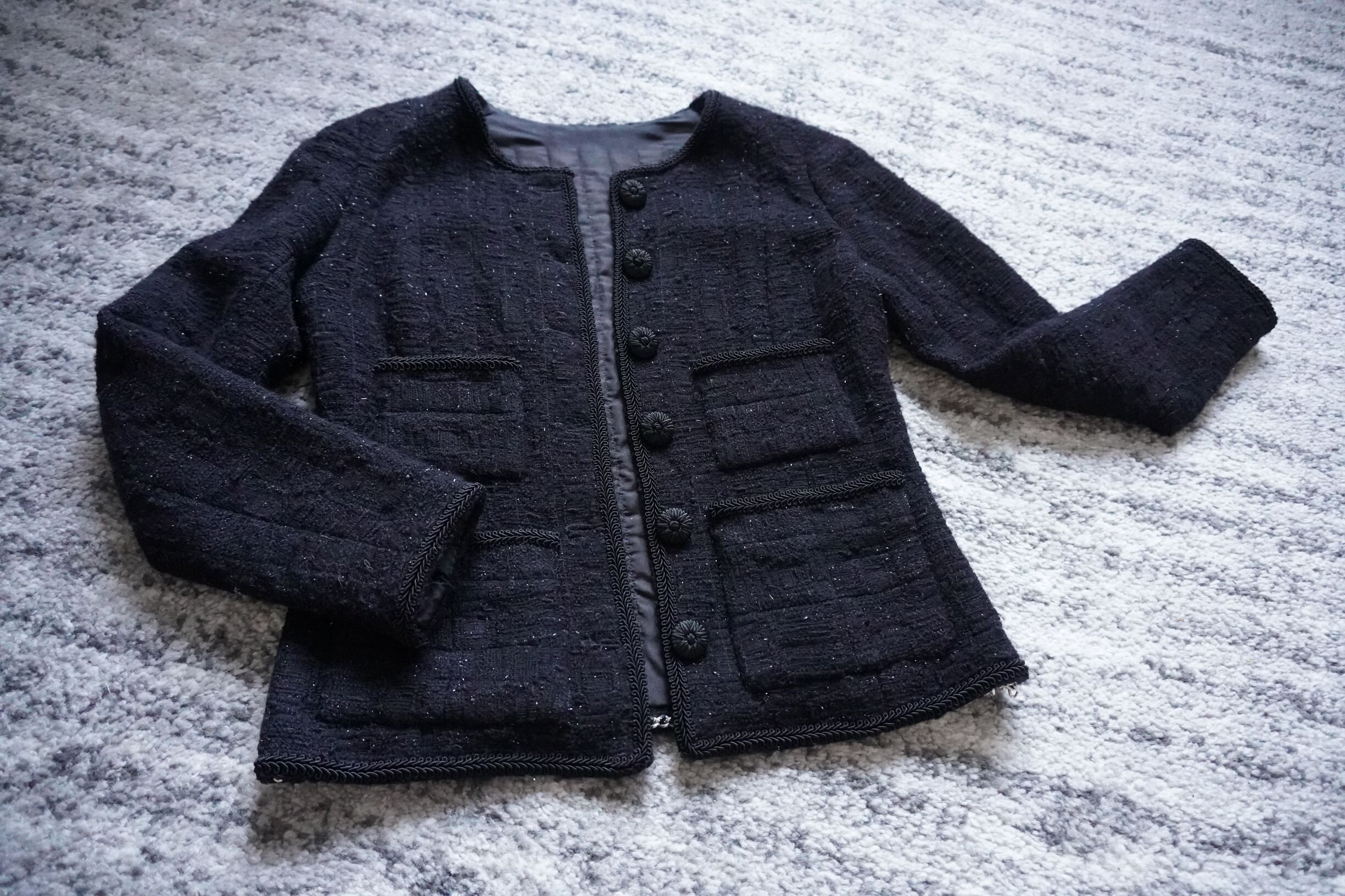
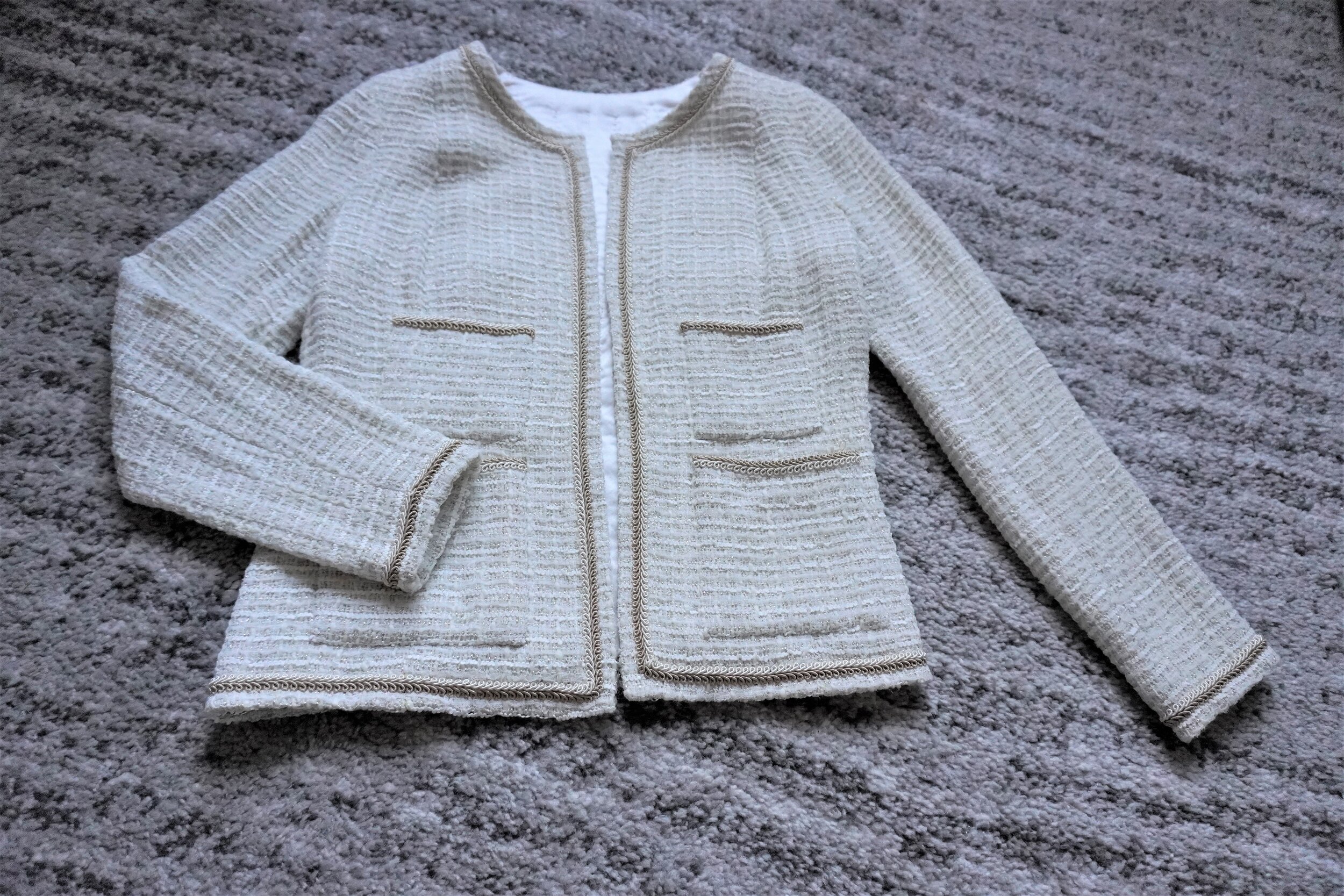
6. Tailored pants: Vogue 9032
Every working woman needs a great tailored pant in their wardrobe, and Vogue 9032 is a great option. The pattern gives two silhouette options (bootcut and wide-legged) and features a fly front zipper, shaped waistband (which makes the pant much more flattering) and side front pockets. But the magic of this pattern isn’t in the garment details—the magic is in the cut, as this pant pattern seems to somehow flatter the bums of most of the people who have tried it. (Don’t believe me? Check out pics of other sewing bloggers’ versions here.)
To keep this looking classic, I would make this up in a classic suiting fabric, perhaps with a bit of stretch to make the pant more comfortable to wear. See my red version below and here.
7. Pencil skirt: Vogue 1324
Another standby of the working woman’s wardrobe, the pencil skirt is a great project for sewists to tackle because it is very difficult to find a pencil skirt that fits perfectly off-the-rack. In my opinion, in order for a pencil skirt to be flattering, it needs to be really fitted to the body and slightly tapered to the knee. Vogue 1324 meets those criteria. Vogue 1324 is a Donna Karan designer pattern, and it shows—the seamlines are really unique as they curve around the body, creating a flattering shape.
I would recommend sewing this in a double knit with a bit of stretch, to make it more comfortable to wear. I made this up using a black double knit and leather for the front center panel, to accentuate the seam lines, but you could also make the skirt up in just one fabric, to keep it looking classic. (If you want to see more pics of this skirt, click here.)
8. Classic blazer: Simplicity 1421
There have been lots of fashion-forward variations on the classic blazer in recent years, but the classic, single-breasted, notched collar blazer endures as a workhorse for working women. Simplicity 1421 is a great choice for this, and it has received great reviews from lots of sewing bloggers.
To keep this classic, I would stick to wool suiting fabrics or even linen, if you live in a warmer climate.
Quick tip: when sewing tailored jackets or coats, I never follow the pattern instructions. Instead, I use the book Tailoring: the Classic Guide to Sewing the Perfect Jacket, which walks you through each and every step of tailoring, including shaping your collar, shaping the jacket front and back, tailoring a notched collar, tailoring pockets and setting in sleeves, all shown in step-by-step photos. The book shows you how to tailor using fusible interfacing, sew-in interfacing sewn by machine, and sew-in interfacing sewn by hand, so you have the full range of options at your disposal (depending on how much patience you have for your project!). I know the photos and book cover might look old-fashioned, but this is a great reference book that has stood the test of time, so definitely check this out if you are just getting started in tailoring.
9. Trench coat: McCall’s 5525
Last but not least, the crowning glory of a classic wardrobe is the trench coat. A good trench coat must have all of the details: gun flap, epaulettes, back yoke, storm pockets, sleeve straps, belt and collar tabs/throat latch. (Quick aside: did you know that all of the details in the trench coat served a practical purpose during WWI? Read this article for some interesting historical background to the trench coat. McCall’s 5525, View E has the classic double-breasted silhouette, large collar and all of the requisite trench coat details.
Make the trench coat in the classic cotton gabardine, if you want to stay true to the original. I made mine out of a water-resistant cotton twill with leather accents, lined with a Burberry-esque plaid on the inside:
This project will take you forever, as there is a ton of topstitching to be done and there are just so. many. little. pieces. to. cut. and. sew. (grrr) But the end result is really worthwhile and it will give you a great sense of accomplishment to check that one off your sewing bucket list.
Are there other wardrobe classics that you think should be on the list? Let me know in the comments!





